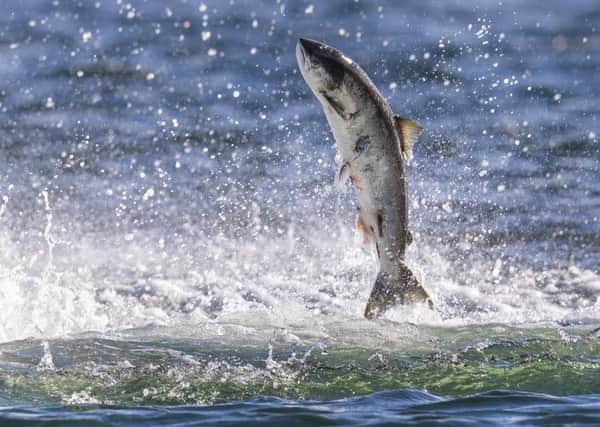Climate change could wreak havoc on Scottish species – Craig Macadam


And it is not just tigers and polar bears that will find it difficult to cope. The recently published Scotland’s Nature on Red Alert report demonstrates that the future is looking bleak for many Scottish species and habitats. Commissioned on behalf of Scottish Environment LINK, a network of more than 35 environmental charities in Scotland, and WWF Scotland, the report draws together existing evidence of climate change impacts on Scotland’s biodiversity.
In Scotland, climate change is changing the habitats of many species to such an extent that they can no longer live here.
Advertisement
Hide AdAdvertisement
Hide AdSpecies such as the Snow bunting is already a conservation concern as its mountaintop habitats are under threat, due to higher temperatures leading to less snow cover. Scotland’s globally significant machair habitat, only found in northern Scotland and north-west Ireland, is under threat from rising sea levels. Machair holds a variety of plants and insects which attract birds such as the Corncrake and the Corn bunting; it is also the last UK stronghold of the Great yellow bumblebee.


Climate change is warming our rivers and seas. Forecasts indicate that Scotland may lose its White beaked dolphin population, as it is already at the edge of its range and is being pushed further north with warming seas.
Some of our most well-known fish species, such as Atlantic salmon and Arctic charr, prefer colder waters but as water temperatures rise, this will threaten the survival and growth of their eggs. While Scotland is regarded as a stronghold for the Arctic charr, a recent study showed that 10 out of the 11 UK populations of Arctic charr studied have declined in abundance since 1990.
Warmer waters are also affecting the availability of food for many of our seabirds. For example, Kittiwakes, which have declined by approximately 60 per cent since 1986, rely on sandeels. Sandeels feed on zooplankton, including the copepod Calanus finmarchicus, which does not do well in warmer waters. So as our waters get warmer, sandeel populations decline, which then affects seabirds such as the Kittiwake.
Climate change is also affecting food sources of other species such as the Golden plover and the Capercaillie. Changing climate conditions upset the availability of food on which chicks rely on.
Specifically, a wet June reduces the Capercaillie chick’s ability to forage for insects, with those chicks that eat less having a reduced chance of survival. For the Golden plover there is now a mismatch between the annual breeding time and the annual emergence of the chicks’ critical food source, craneflies.
In Scotland, climate change impacts on biodiversity will be further compounded due to our geography.
With Scotland located at the western edge of the European continent, many species will simply have nowhere to go as the Atlantic Ocean is a natural barrier to their movement.
Advertisement
Hide AdAdvertisement
Hide AdThese species losses are potentially devastating, and not just in terms of our environment’s natural and cultural value but also because of the ecosystem services our species and habitats provide. We rely on those services for our own wellbeing and to mitigate the impacts of climate change. If our peatlands dry out, they can no longer store as much carbon for us and our rivers may no longer protect us from flooding if rainfall levels rise.
To stem the tide of species decline in Scotland, we need to drastically cut greenhouse gas emissions by 2030 and reach net zero emissions by 2050 at the latest.
However, emissions will go down faster if we have a healthy environment that can sequester carbon, while continuing to provide important ecosystem services such as pollination, clean water and air.
In other words, ambitious climate targets will only really deliver if we restore the health of our nature and improve its resilience to climate change.
Therefore, the Scottish Parliament must ensure that the new Scottish Climate Bill fully reflects the ambition of the Paris Agreement to limit the temperature increase to 1.5°C by introducing ambitious targets ending Scotland’s contribution to climate change, and back these up with action to secure the future of Scotland’s wildlife.
Anything less compromises Scotland’s already fragile biodiversity.
Craig Macadam, Vice Chair, Scottish Environment LINK